Partnership Agreement Samples
-

Domestic Partnership Agreement
download now -
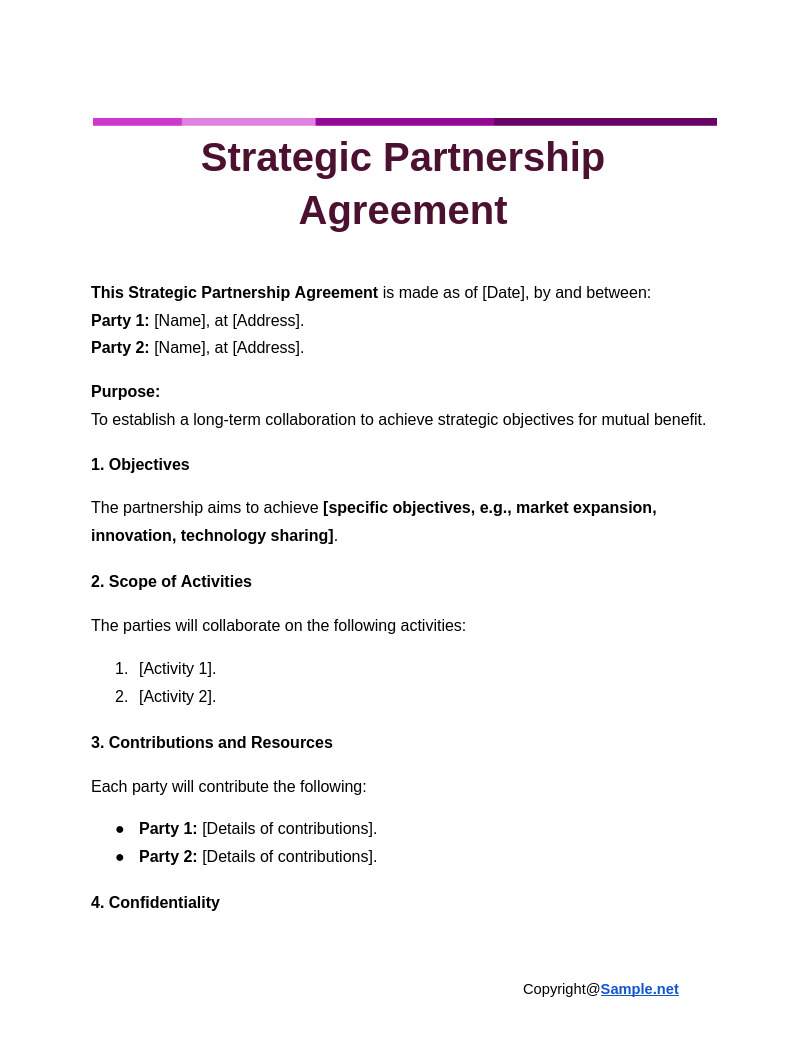
Strategic Partnership Agreement
download now -
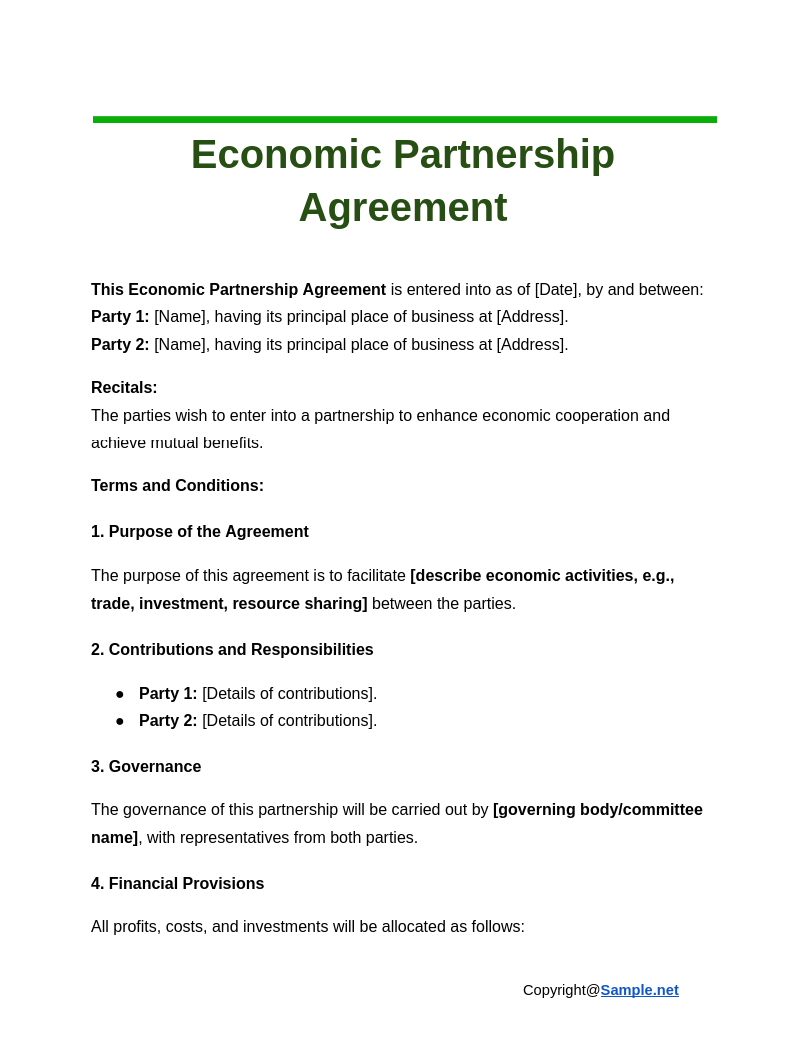
Economic Partnership Agreement
download now -
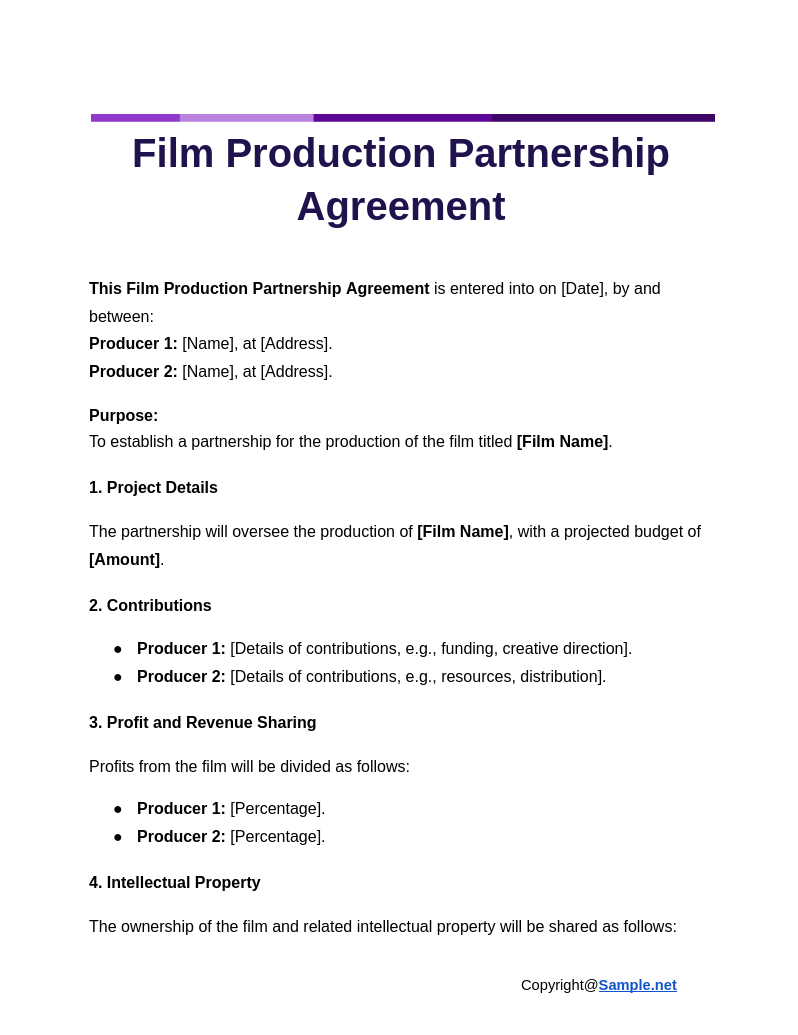
Film Production Partnership Agreement
download now -
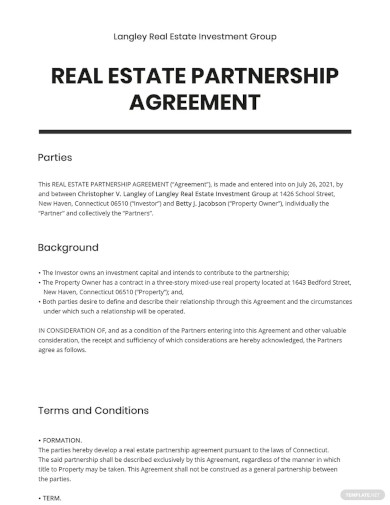
Real Estate Partnership Agreement Template
download now -

Partnership Agreement Template
download now -

Restaurant Partnership Agreement Template
download now -
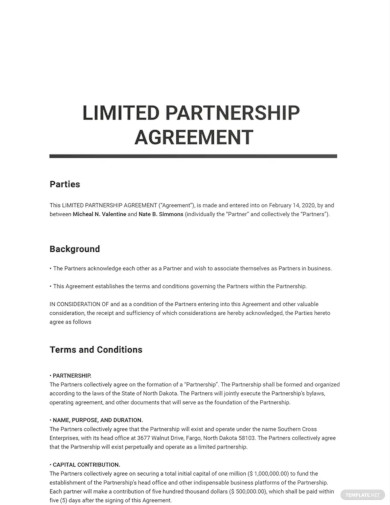
Limited Partnership Agreement Template
download now -
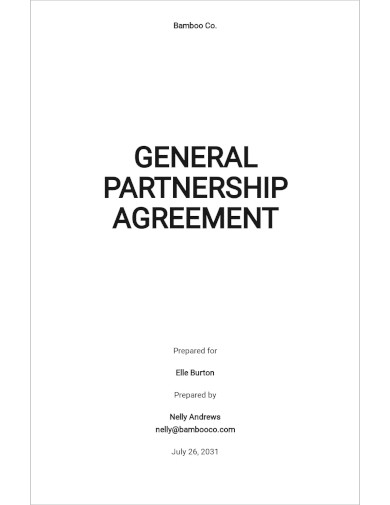
Free Basic General Partnership Agreement Template
download now -
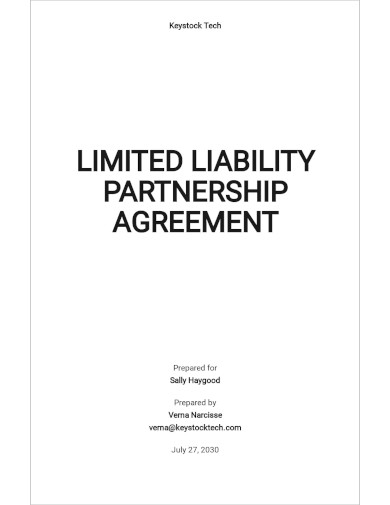
Limited Liability Partnership Agreement Template
download now -
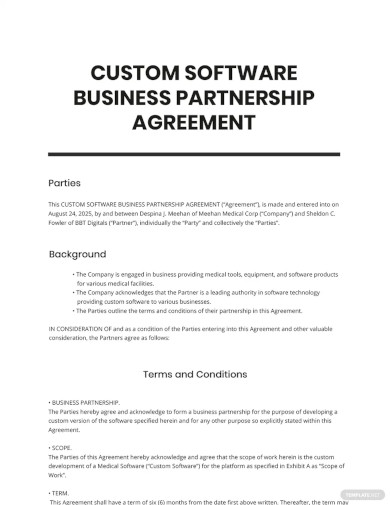
Custom Software Business Partnership Agreement Template
download now -

Restaurant Limited Partnership Agreement Template
download now -
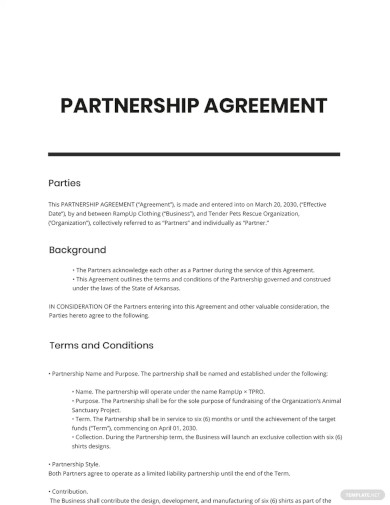
Startup Partnership Agreement Template
download now -

Simple Limited Partnership Agreement Template
download now -
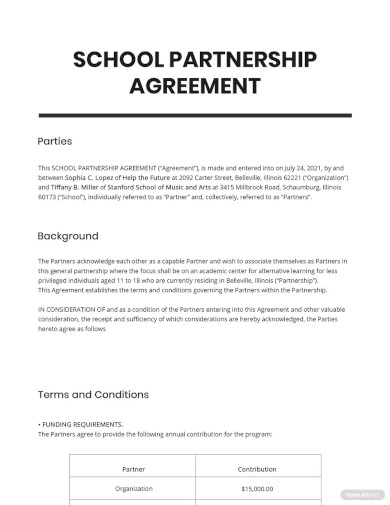
School Partnership Agreement Template
download now -

Strategic Marketing Partnership Agreement Template
download now -

Checklist Partnership Agreement Template
download now -
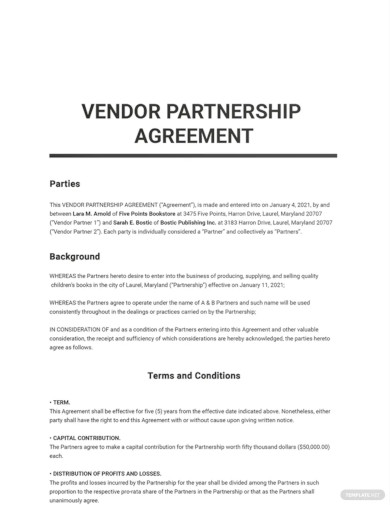
Vendor Partnership Agreement Template
download now -
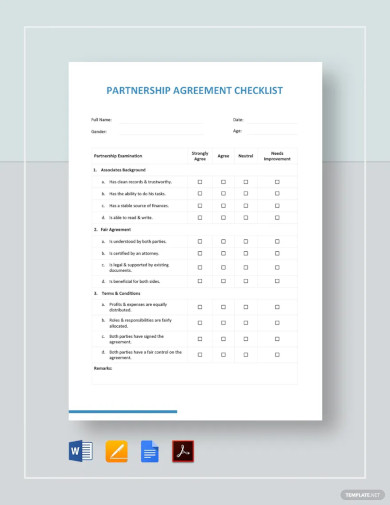
Partnership Agreement Checklist Template
download now -
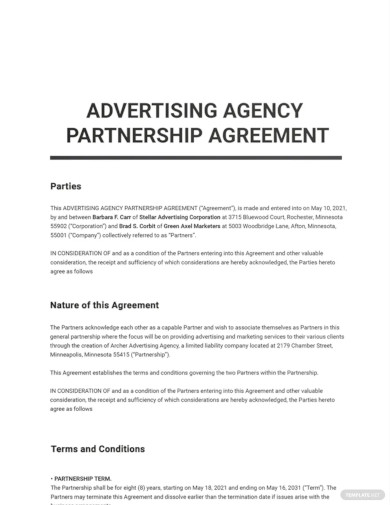
Advertising Agency Partnership Agreement Template
download now -

Startup Business Partnership Agreement Template
download now -
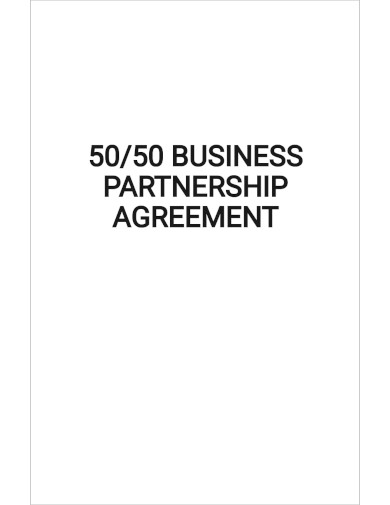
50/50 Business Partnership Agreement Template
download now -

Sample Real Estate Partnership Agreement Template
download now -

Basic Limited Partnership Agreement Template
download now -

Editable Partnership Agreement Template
download now -
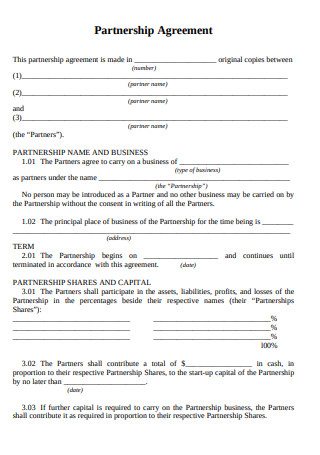
Small Business Partnership Agreement
download now -
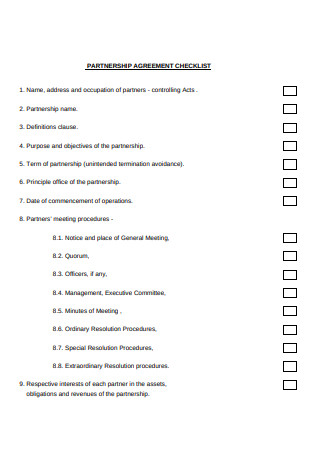
Printable Partnership Agreement Checklist
download now -
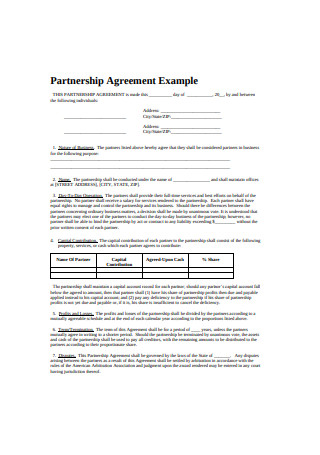
Partnership Contract Agreement Example
download now -
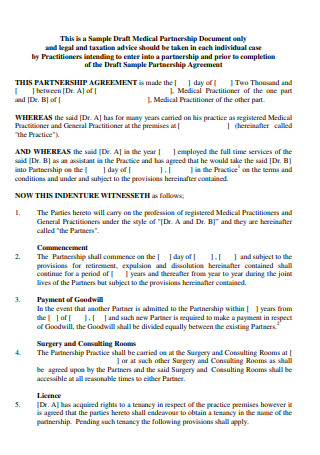
Sample Draft Medical Partnership Agreement
download now -
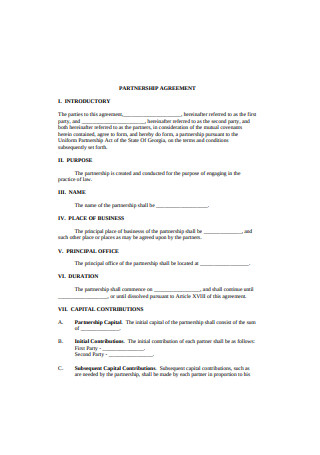
Joint Venture Partnership Agreement Format
download now -
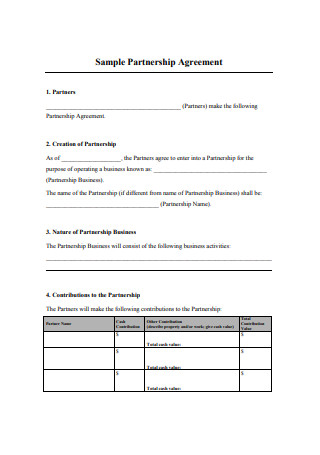
Sample Partnership Agreement
download now -
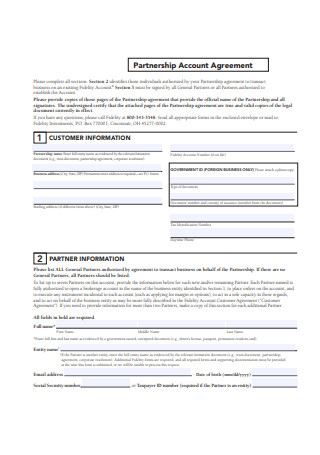
Real Estate Partnership Account Agreement
download now -
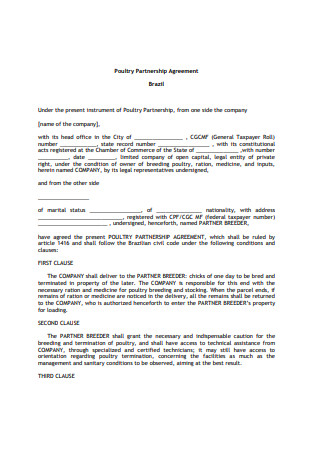
Poultry Investment Partnership Agreement
download now -
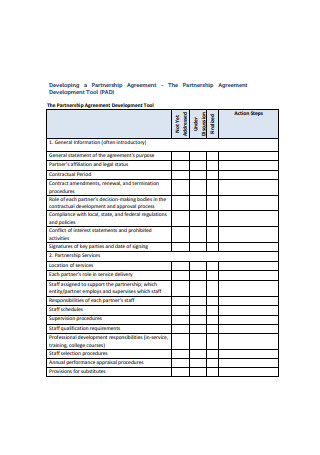
Restaurant Partnership Agreement Development
download now -
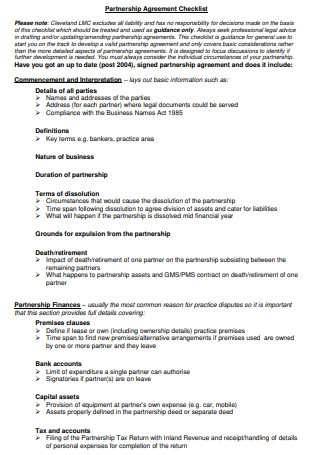
Sample Partnership Agreement Checklist
download now -
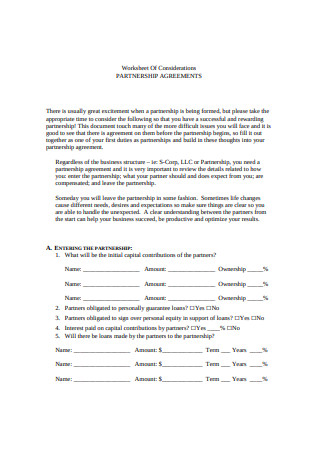
Partnership Agreement Worksheet
download now -

Framework Silent Partnership Agreement
download now -
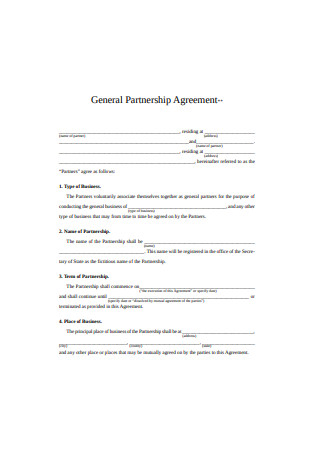
General Blank Partnership Agreement
download now -
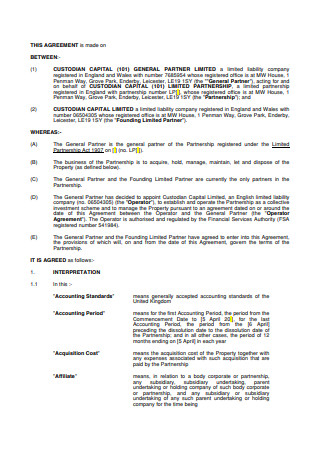
Limited Partnership Agreement
download now -
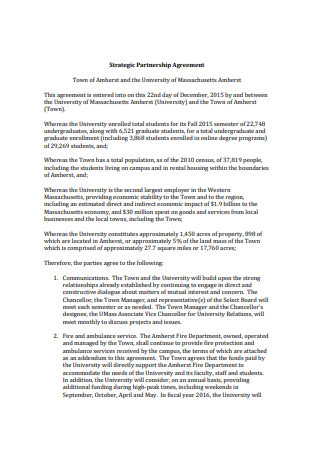
Strategic Written Partnership Agreement
download now -
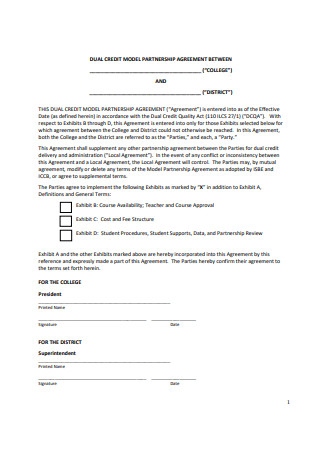
Model Partnership Agreement Letter
download now -

Limited Partnership Agreement Sample
download now -

Financial Termination Partnership Agreement
download now -
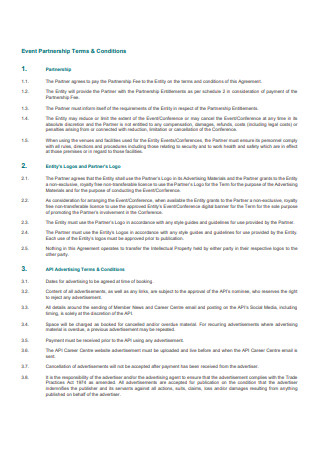
Event Partnership Agreement
download now -
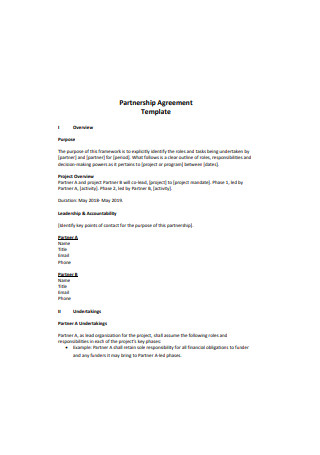
Partnership Legal Agreement
download now -
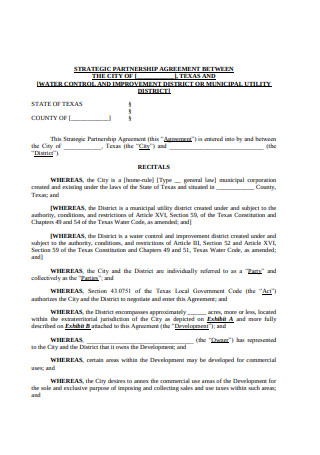
Property Partnership Agreement
download now -
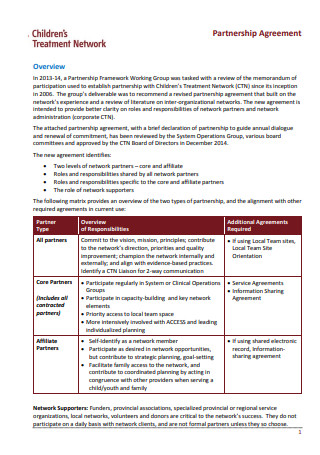
Sample Short Partnership Agreement
download now -
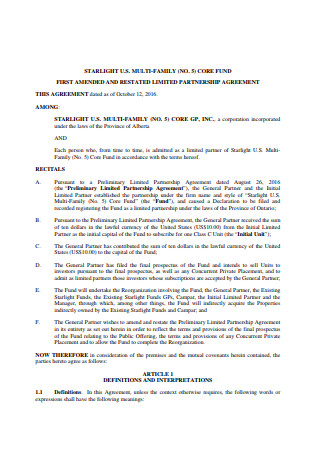
Law Firm Partnership Agreement
download now -

Primary Non Profit Partnership Agreement
download now -

Partnership Proposal Agreement Checklist
download now -

Signed Partnership Agreement
download now -
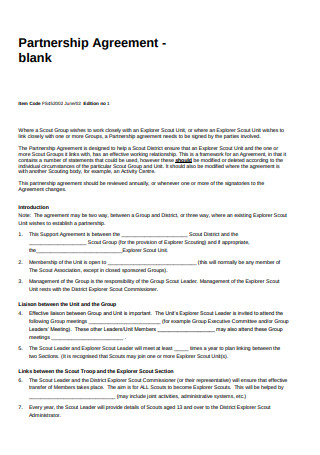
Basic Construction Partnership Agreement
download now -
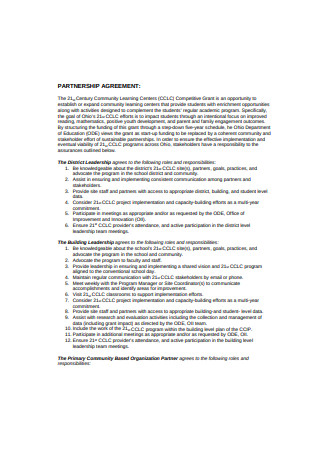
Notarized Partnership Agreement
download now -
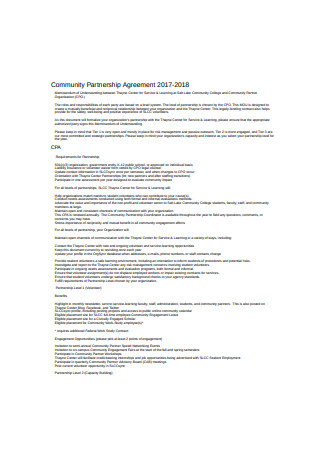
Community Salon Partnership Agreement
download now -

Family Partnership Agreement Procedure
download now -
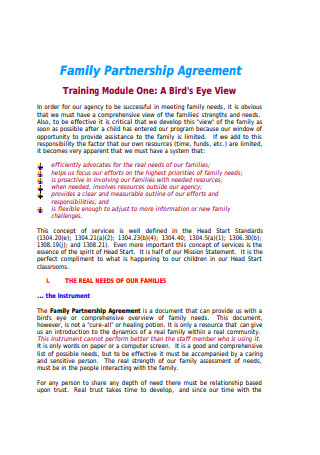
Family Partnership Agreement
download now -
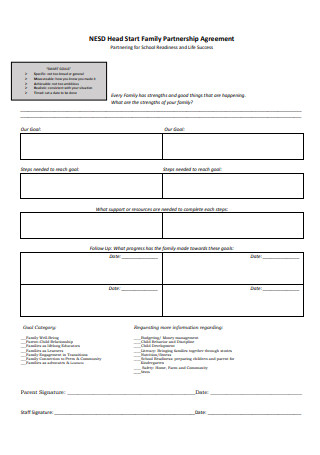
Standard Partnership Agreement
download now -

Family Partnership Agreement Process
download now -
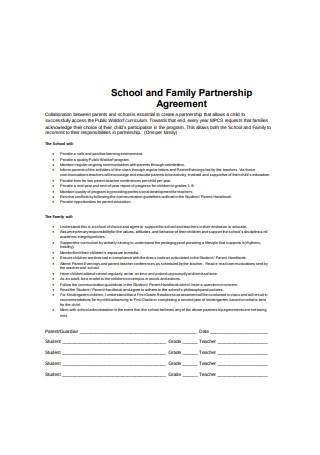
School and Family Partnership Agreement
download now -
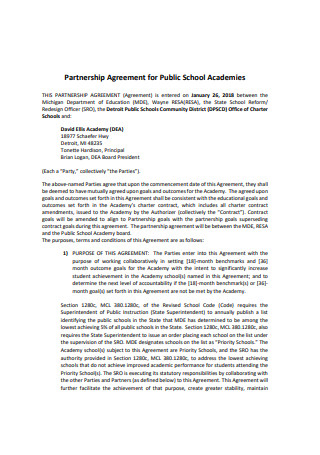
Partnership Agreement for Public School Academies
download now -

Editable Partnership Agreement
download now -
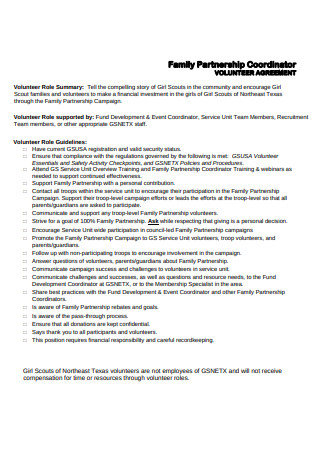
Family Partnership Coordinator Volunteer Agreement
download now -

School Partnership Agreement
download now -

Children Partnership Agreement
download now -
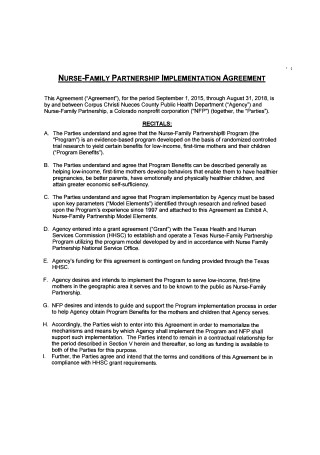
Nurse-Family Partnership Implementation Agreement
download now -
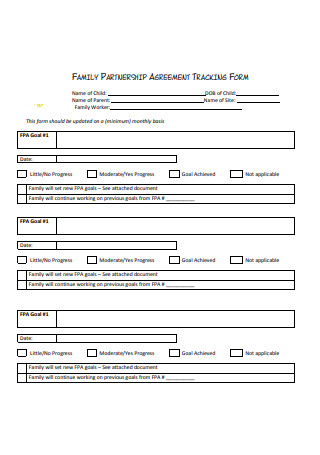
Family Partnership Agreement Tracking Form
download now -

School-Community Partnership Agreement
download now -

Community Food-Growing Partnership Agreement
download now -
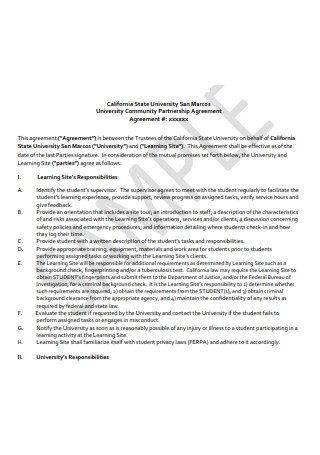
Sample Community Partnership Agreement
download now -
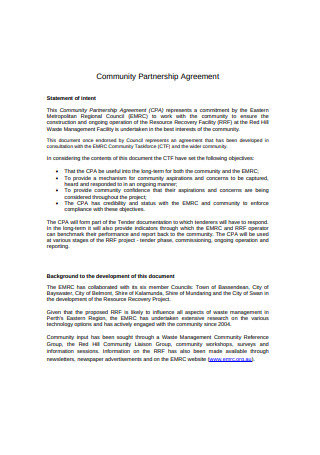
Community Partnership Agreement
download now -
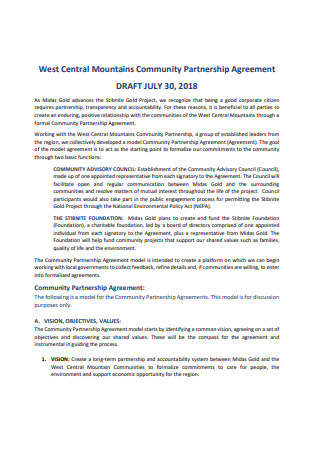
Professional Partnership Agreement
download now -

School Community Partnership Agreement
download now -

Formal Partnership Agreement
download now -
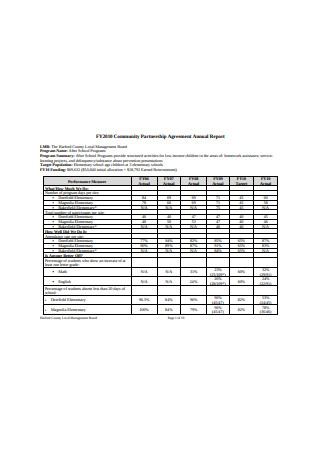
Community Partnership Agreement Annual Report
download now -
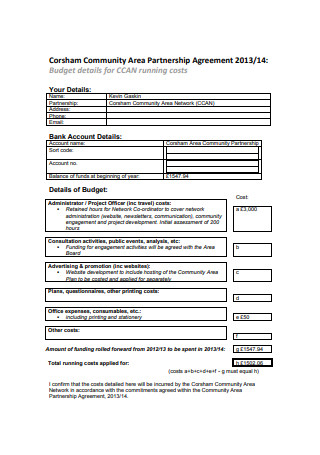
Community Area Partnership Agreement
download now -
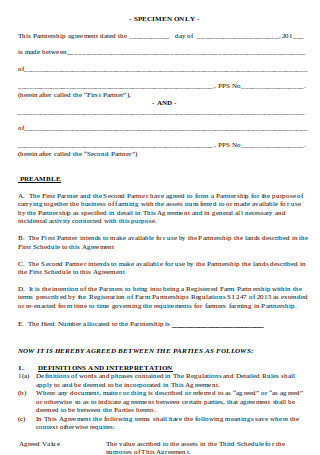
Partnership Specimen Agreement
download now -

Environmental Partnership Agreement
download now
FREE Partnership Agreement s to Download
Partnership Agreement Format
Partnership Agreement Samples
What is a Partnership Agreement?
Importance of a Partnership Agreement
Purposes of a Partnership Agreement
How to Create a Partnership Agreement
FAQS
What happens if there is no partnership agreement?
Can the terms of a partnership agreement be changed later?
How does a partnership agreement protect individual partners?
What key elements should be included in a partnership agreement?
How do you handle disagreements in a partnership agreement?
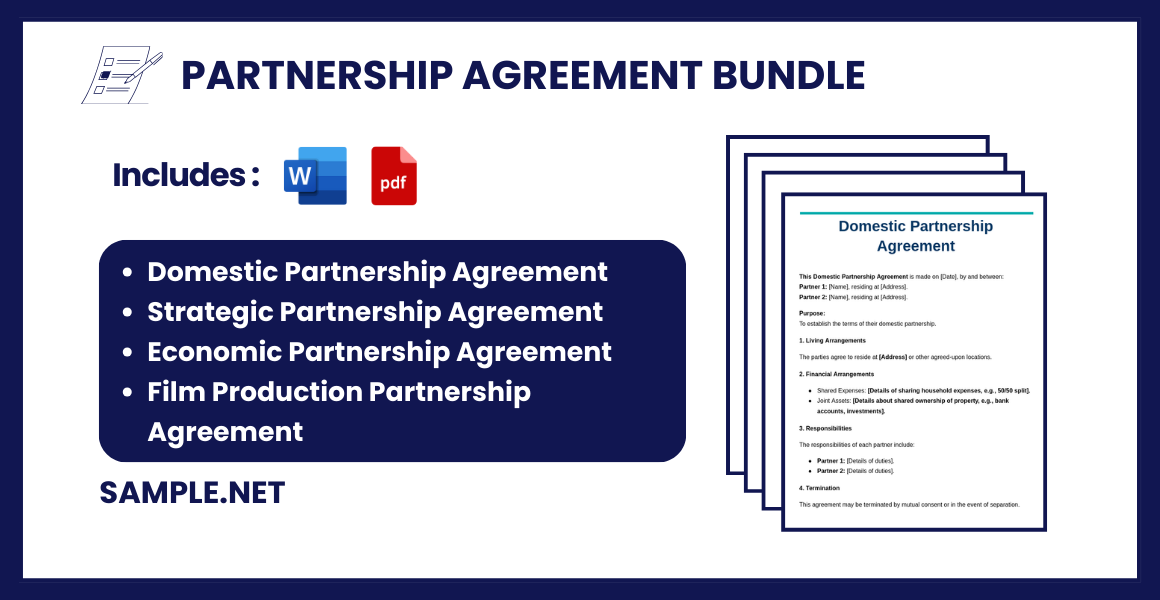
Download Partnership Agreement Bundle
Partnership Agreement Format
This Partnership Agreement is made and entered into as of [Date], by and between:
Partner 1: [Name], residing at [Address].
Partner 2: [Name], residing at [Address].
(Optional) Add additional partners as required:
Partner 3: [Name], residing at [Address].
The parties agree as follows:
1. Name and Business Purpose
1.1 Partnership Name:
The partnership shall operate under the name [Name of Partnership].
1.2 Business Purpose:
The purpose of the partnership is [Describe the nature of the business, e.g., manufacturing, consulting, e-commerce, etc.].
2. Term
This agreement will commence on [Start Date] and shall continue until terminated as per the terms of this agreement.
3. Contributions
3.1 Initial Contributions:
- Partner 1: [Details of contributions, e.g., cash, property, or services].
- Partner 2: [Details of contributions].
3.2 Additional Contributions:
Partners may contribute additional resources as agreed upon unanimously.
4. Profit and Loss Allocation
Profits and losses shall be shared in the following proportions:
- Partner 1: [Percentage, e.g., 50%].
- Partner 2: [Percentage, e.g., 50%].
Adjust for additional partners as necessary.
5. Management and Decision-Making
5.1 Management Duties:
Each partner will participate in the management of the business as follows:
- Partner 1: [Responsibilities].
- Partner 2: [Responsibilities].
5.2 Decision-Making:
Decisions will be made by [unanimous consent/majority vote].
6. Partner Withdrawal and Termination
6.1 Voluntary Withdrawal:
Any partner may withdraw by providing [Number of Days] days’ written notice.
6.2 Termination:
The partnership may be dissolved under the following conditions:
- [List termination events, e.g., mutual consent, insolvency, death].
7. Confidentiality
All partners agree to maintain confidentiality regarding the partnership’s affairs and sensitive information.
8. Dispute Resolution
Any disputes arising out of or related to this agreement will be resolved by [mediation/arbitration/court jurisdiction].
9. Amendments
This agreement may only be amended by written consent of all partners.
10. Governing Law
This agreement shall be governed by the laws of the State of [State].
11. Miscellaneous
11.1 Entire Agreement:
This agreement constitutes the entire understanding between the partners.
11.2 Severability:
If any provision of this agreement is found to be invalid, the remaining provisions will remain enforceable.
Signatures
Partner 1
Signature: ________________________
Date: ____________________________
Partner 2
Signature: ________________________
Date: ____________________________
What is a Partnership Agreement?
A partnership agreement is a formal contract between two or more individuals or entities that defines the terms of their business relationship. It covers key aspects like profit-sharing ratios, partner roles, decision-making processes, and dispute resolution mechanisms. By addressing potential areas of conflict in advance, a partnership agreement helps in maintaining a smooth business operation and avoids misunderstandings. You can also see more on Startup Business Partnership Agreement.
Importance of a Partnership Agreement
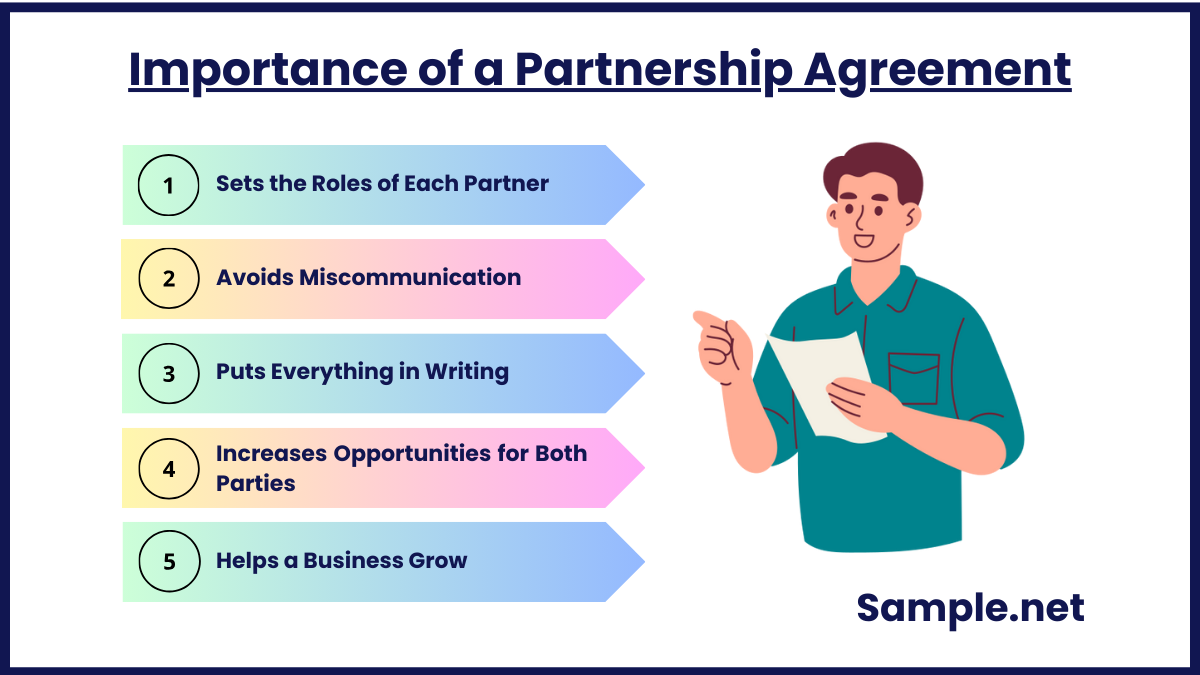
We should always do research and make ourselves knowledgeable on an activity we want to venture into. Forming a business partnership proposal is a huge commitment. That’s why it is preferred we put such agreement in writing, to establish the partnership fully. So, why is a partnership agreement relevant in starting a partnership? To mention a few:
1. Sets the Roles of Each Partner
It also sets the scheme of profit-sharing between deciding who manages, who contributes, how much has been initially contributed, and how much share a partner receives from the generated profit. Basically, it is a blueprint of not only the external but as well as the internal affairs of the business.
2. Avoids Miscommunication
Generally, people enter into written partnership agreements to avoid miscommunication and to ultimately avoid any legal disputes that may arise during the life of a partnership. Individuals forming the partnership discuss beforehand the nitty-gritty; then, place it in writing to serve as concrete evidence of what was agreed upon before the creation of the partnership.
3. Puts Everything in Writing
Partnership agreements map out the existence of the partnership, from it’s formation to its termination. It provides the structure of management and control within the formed organization. Whenever questions on governance and profit-sharing arise, partners and third persons may refer to the partnership contract for guidance. You can also see more on Partner Agreement.
4. Increases Opportunities for Both Parties
Forming a partnership within another person increases business opportunities. Consider this. John has a crate of mangoes, and Mary owns a juicer; they entered into a partnership agreement and opened a mango juice stand. By entering into a partnership, John and Mary were able to open their own business.
5. Helps a Business Grow
Lastly, partnership agreements help small businesses grow and flourish into something with potential through the resource pooling arrangements. Company A, a small business locally owned, owns a field of mango trees and sells mango fruits; on the other hand, Company B owns a plant specifically for mass production of dried fruits to sell nationwide. If Company A and Company B enter into a partnership to mass-produce dried mangoes, both companies greatly benefit from each other. By pooling resources with another company, Company A, a small local business, can sell products on a large scale. You can also see more on Strategic Alliance Agreements.
Purposes of a Partnership Agreement
1. Defining Roles and Responsibilities
It clarifies each partner’s role and area of responsibility within the business.
2. Establishing Profit-Sharing Ratios
It specifies how profits and losses will be distributed among the partners.
3. Ensuring Dispute Resolution
A partnership agreement includes procedures for resolving conflicts amicably. You can also see more on Business Partnership Agreement.
4. Mitigating Risks
It protects partners by legally outlining the terms and obligations, reducing potential liabilities.
5. Planning for Future Changes
It addresses situations like a partner’s exit, the introduction of new partners, or the dissolution of the partnership. You can also see more on Partnership Contract.
How to Create a Partnership Agreement
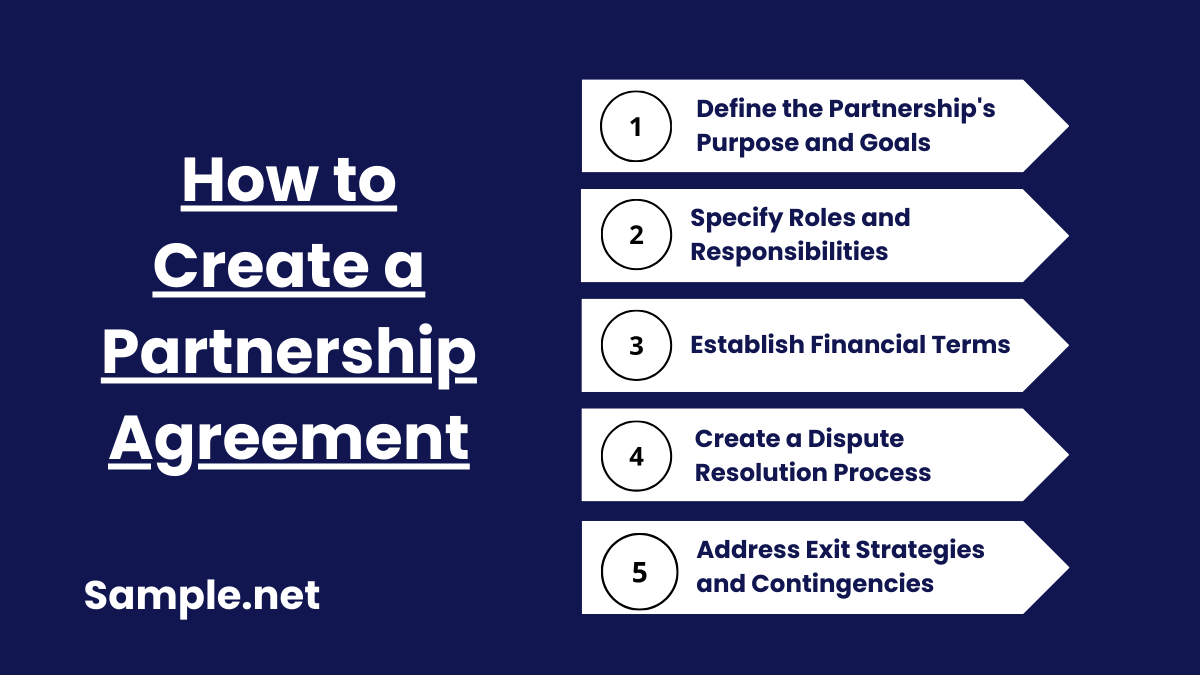
Step 1: Define the Partnership’s Purpose and Goals
Begin by clearly outlining the objectives of the partnership. Detail the type of business, the services or products offered, and the target market. This shared vision will serve as the cornerstone of the agreement.
Step 2: Specify Roles and Responsibilities
Assign specific roles to each partner. For instance, one partner might handle financial management, while another oversees operations. Include detailed descriptions to avoid overlapping responsibilities and confusion. You can also see more on Brand Partnership Agreement.
Step 3: Establish Financial Terms
Clearly state how profits and losses will be distributed. Include details on initial investments, future contributions, and expense-sharing arrangements to ensure financial transparency.
Step 4: Create a Dispute Resolution Process
Incorporate a structured process for resolving disputes, such as mediation or arbitration. Define what steps partners should take if disagreements arise to prevent business disruptions. You can also see more on Farm Partnership Agreement.
Step 5: Address Exit Strategies and Contingencies
Include provisions for handling scenarios like a partner leaving, introducing a new partner, or dissolving the business. Outline buyout terms and steps for transferring ownership to maintain business continuity.
A partnership agreement is more than just a formality; it is a crucial document for any business partnership. By setting clear expectations and procedures, it fosters trust and collaboration among partners while mitigating risks. Investing time in crafting a thorough and well-structured agreement can pave the way for a successful and sustainable business venture. You can also see more on Strategic Agreement.
FAQS
What happens if there is no partnership agreement?
Without a partnership agreement, disputes can lead to legal complications. The business would also be governed by default state or country partnership laws, which may not suit the partners’ preferences.
Can the terms of a partnership agreement be changed later?
Yes, partners can amend the agreement, but changes must be documented in writing and signed by all partners. You can also see more on Construction Partnership Agreement.
How does a partnership agreement protect individual partners?
A partnership agreement protects individual partners by clearly defining roles, financial contributions, and liabilities. It prevents one partner from being held accountable for actions or debts incurred by another without prior agreement.
What key elements should be included in a partnership agreement?
A robust partnership agreement should include roles and responsibilities, profit-sharing ratios, decision-making processes, dispute resolution mechanisms, and exit strategies to ensure comprehensive coverage. You can also see more on Restaurant Partnership Contract.
How do you handle disagreements in a partnership agreement?
Partnership agreements typically outline a dispute resolution process, including mediation, arbitration, or legal proceedings, ensuring that conflicts are resolved amicably and efficiently.
